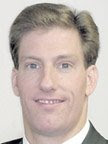What do high-energy particle physics and Bible study have to do with one another? Two unrelated Catholic News Service stories this week point to the connection between reason and faith.
In a talk June 10, Pope Benedict XVI reviewed the thought of a ninth century Irish monk, John Scotus Erigena.
He taught that the only way to understand the Bible fully was with an approach that relied on intelligence and prayer at the same time, and that the final result was not understanding, but contemplation, according to CNS.
Christians, the Pope said, have "the obligation to continue to seek the truth until one reaches an experience of silent adoration of God."
This concept of using one’s intellect not merely for its own ends but to orient the person toward the Other finds a parallel in a Vatican delegation’s visit to CERN, the world’s largest particle physics laboratory in Geneva, Switzerland.
The research at CERN is not strictly theoretical, even though the leader of the delegation, Cardinal Giovanni Lajolo, expressed his personal interest “regarding the farthest limits that astrophysical science is striving to reach with proton acceleration."
CNS reports that the idea of having the Vatican visit CERN came from Ugo Amaldi, the president of TERA Foundation, which collaborates closely with CERN in finding ways to apply atomic research in treating cancer, especially in children.
It’s been fashionable for people to say science and religion are mutually exclusive. Far from it.
As this one example shows, science and religion meeting in the service of human needs can work in harmony, not opposition.
In doing so, one can help the other affirm life and seek truth, both of which come from God, the origin and end of humanity.
Thursday, June 11, 2009
Subscribe to:
Post Comments (Atom)

No comments:
Post a Comment